









“Where there is no vision, the people perish...” Proverbs 29:18 postnewsgroup.com
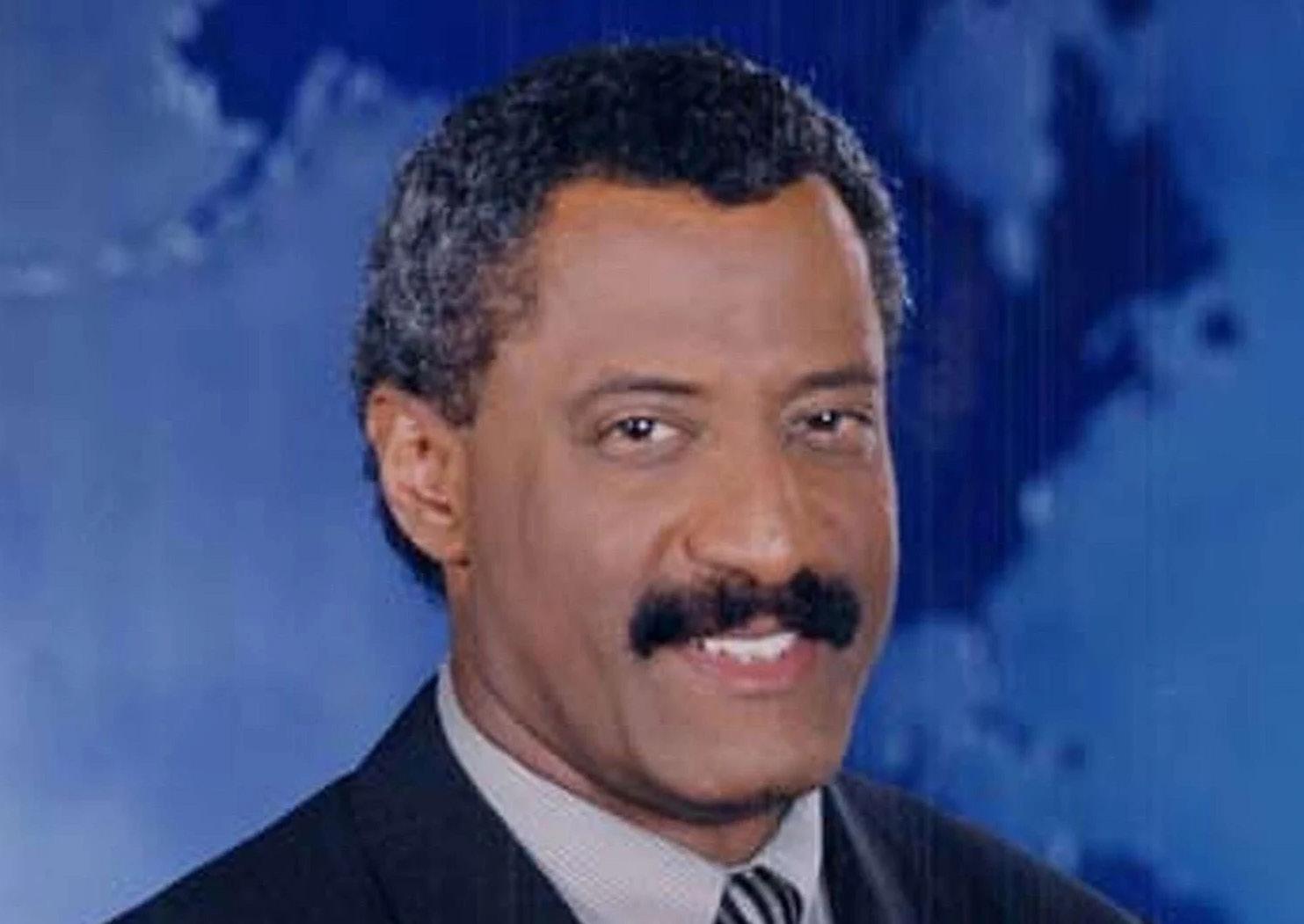
Dennis Richmond, who rose through the ranks from typist to reporter to become KTVU TV’s longest-serving news anchor, died Wednesday. He had suffered a heart attack two months ago.
Richmond was one of the first African Americans to anchor a mainstream TV news station when he got his start in 1976, and even more rare was staying on the air for 36 years.
The 81-year-old Ohio native, known for his calm baritone and signature mustache, was much admired by colleagues, elected officials and, most of all, his viewers.
“Dennis was a strong presence in the KTVU newsroom for decades, guiding the team and setting high standards for himself and his colleagues in everything they did,” the channel's general


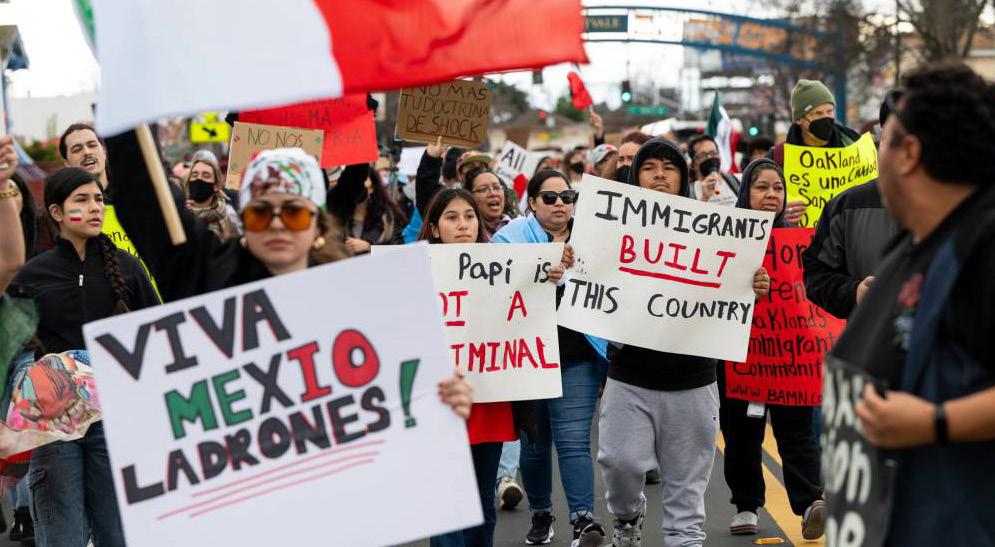
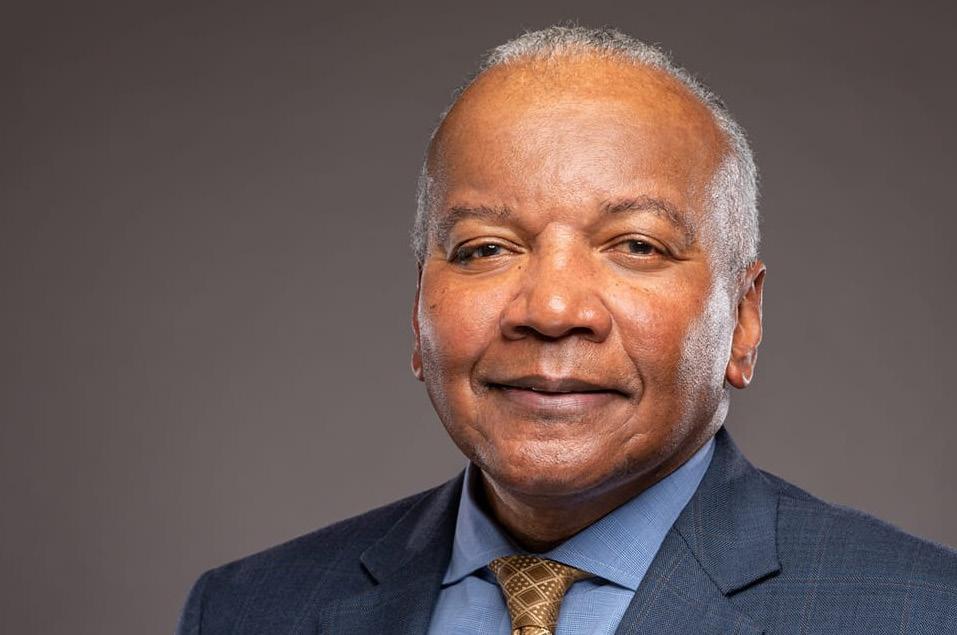
By Albert L. Brooks MD OPINION
Special to The Post Presidential administrations significantly impact the health and wellbeing of our patients and communities.
By Ken Epstein
Elected leaders and organizations around the country are refusing to cooperate with President Trump’s mass roundups and deportations. In the forefront are African American mayors of several major cities, including Brandon Johnson of Chicago and Newark Mayor Ras Jua Baraka.
“When 30,000 Ukrainians sought asylum here in the City of Chicago, nobody said a mumbling word. But all of a sudden (when) indigenous people who are trying to get to a land that was robbed from them through colonization, they want me, as a Black man, to
be mad at them. You got to be out of your freaking mind,” said Mayor Johnson.
“Regardless of who is in the White House, Chicago is a city that opens its arms to people from around the globe,” he said. “We will continue to protect civil and human rights, and we welcome all individuals and families who want to work, live and thrive here in our beloved city. The Welcoming City Ordinance is a law, and it is the law of the land here in Chicago. We will uphold it, along with the complementary Illinois Trust Act to ensure that our immigrant com-
Interfaith Council of Alameda County, Community Orgs, Address Food Insecurity, Housing, and Safety
Through the Department of Health and Human Services (HHS) and the agencies within it, such as the Centers for Medicare & Medicaid Services and the National Institutes of Health, this new administration will decide how financial resources
are allocated, dictate the focus of federal research, and determine how our public health care insurance systems are managed, including the Affordable Care Act (ACA), the Children’s Health Insurance Program, the Vaccines for Children program, Medicare, and Medicaid.
The decisions made over the next four years will impact all Americans but will be felt more acutely by those most underserved and vulnerable.
As physicians, we are greatly

By Magaly Muñoz
In 2023, the average spending on groceries increased by nearly $30 each month from the year before; people are spending over $500 a month to put food on the table.
Through previous reporting by the Post, we’ve learned that families in Oakland are depending more and more on free or low cost groceries from food banks because they can no longer afford the rising costs of food at the store.
Food banks and grocery giveaways are a large part of the resources nonprofits in Oakland prioritize, particularly in areas like East and West Oakland where low-income families of color tend to reside. These neighborhoods are often labeled as “food deserts” or communities that have limited access to affordable and nutritious foods.
We’ve recently spoken to families across these two areas of Oakland and have heard several stories that all point to one problem: food is expensive. Some individuals are spending upwards of $150 a week for themselves or double if they have teens or small children in the family.
We’ve also heard stories of people with chronic illnesses like diabetes and high blood pressure
struggling to maintain their diets because they’re having a hard time affording the food that helps them stay healthy.
Do these experiences sound similar to what you or your family are dealing with every month? Are you struggling to afford your basic groceries every week? Do you depend on food banks to help you get by? Are there any chronic illnesses in your household that need to be managed by a special diet?
We want to hear about your experiences and ideas for solutions.
The Oakland Post is investigating food access in Oakland and how residents are surviving as the cost of living continues to increase. Your experiences will help shape our reporting and show local leaders the need to invest in our communities.
In order to get as much feedback as possible, we ask that you fill out a brief questionnaire by visiting tinyurl.com/Oakland-Post-foodsurvey. You can also scan the QR code above to reach the survey. After you fill it out, please consider sharing the link with your friends and family in Oakland.
If you have questions, please reach out to our Oakland reporter Magaly Muñoz at mmunoz@postnewsgroup or text/call her at (510) 905-5286.

By Kevin Hicks
As the costs of basic necessities continue to rise, the Interfaith Council of Alameda County (ICAC), along with local organization Helping Others Win (www.helpingothers-win.org), have committed to easing the burdens many families are facing.
LaMel Smith, Executive Director of Helping Others Win, has partnered with Sr. Pastor Ken Chambers, Pastor Candase Chambers, and Board President Ashley Chambers of West Side Missionary Baptist Church, along with the Interfaith Council of Alameda County (ICAC), for the past two years to provide food donations every Wednesday and Friday at the ICAC Hub. In collaboration with the Alameda Food Bank, they distribute fresh fruits, vegetables, and meats to as many
as 500 community members a day from different demographic groups.
When food supplies remain after distribution, volunteers extend their efforts to tent cities and homeless encampments.
Oakland has a rich history of food donation dating back to the early 20th century. The civil rights movement gave rise to grassroots efforts addressing food insecurity, with the Black Panther Party pioneering free meal programs for children in low-income neighborhoods.
Today, organizations such as Helping Others Win, West Side Missionary Baptist Church (www. westsidelove.org), and the Interfaith Council of Alameda County (www.interfaithac.org) continue to advocate for food equity and
By Magaly Muñoz
With the start of the second
Donald Trump administration, many in the immigrant community are concerned about what this presidency will bring for themselves and their families, considering undocumented immigrants are at the top of Trump’s hit list. It’s important to know what rights undocumented and all other residents have in case of a possible encounter with immigration officials.
Here is a list of rights you have when in contact with immigration:
● Do not open the door: ICE must have a warrant signed by a judge to enter your home. Do not open your door unless an ICE agent shows you a warrant. ICE can hold a warrant against a window or slide it under the door. To be valid, the warrant must have your correct name and address on it.
● If immigration agents enter your home without your permission, verbally express that you do not give them permission to enter your home or search your belongings.
● Do not answer any questions. You have a right to remain silent. If you do choose to answer questions, do not lie.
● Do not sign any documents.
● Ask to speak with your lawyer or a loved one. You can simply say, “I need to speak to my attorney.” Before you sign anything, talk to a lawyer. Agents may try to get you to sign away your right to see a lawyer or a judge.
● If you feel safe, record the event with your cell phone either through video or audio only.
● ICE Lies: Do not agree to what ICE asks. For example, do not follow them to their office, to immigration offices like USCIS, or to

By Bo Tefu California Black Media
On Jan. 28, California Attorney General Rob Bonta led a multistate coalition in filing a lawsuit against the Trump administration after it announced a federal funding freeze amounting to an estimated $3 trillion.
On Jan. 31, the U.S. District Court for the District of Rhode Island issued a decision granting a temporary restraining order that prevented the freeze from going into effect.
“Today’s court order ensures our communities are able to continue to access necessary federal funding for disaster recovery, including for California’s wildfire recovery efforts; education; public health and safety; and infrastructure projects. While the


OMB directive was rescinded, the Administration has made clear that it intends to proceed with its plans to freeze federal funding –that’s why we went to court to get this emergency pause,” said Bonta in a statement.
“The Trump Administration is intentionally creating chaos through its public actions and statements, attempting to sow fear and confusion in our communities. We will not fall for this bait and switch. California has too much at stake,” Bonta’s statement continued.
According to Bonta’s office, the Trump Administration is required to give written notice of this order to all agencies and their employees, contractors, and grantees by Monday, Feb. 3, 2025, at 9 a.m. ET.
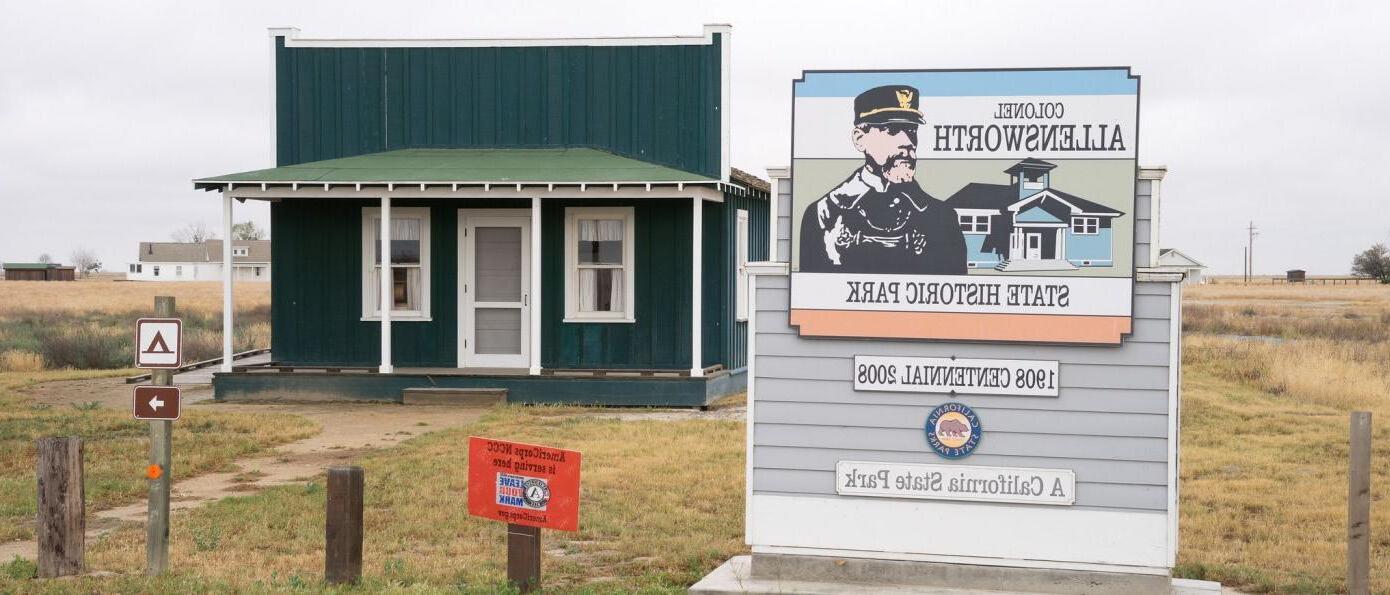
By Edward Henderson California Black Media
The firestorms that ravaged Southern California have drawn attention to historically Black communities like Altadena, one of the first areas in Los Angeles County where Black families could buy homes during the Great Migration. Before the fire, Altadena’s Black population was 18% with a Black homeownership rate of nearly 81% — more than the double the state rate of about 36.6%.
For Black History Month, California Black Media explores 14 other historically Black neighborhoods that thrived in the Golden State despite numerous challenges. Note: This is not a comprehensive list.
1. Allensworth (Tulare County) – Founded in 1908 by Colonel Allen Allensworth and four other Black settlers, Allensworth was California’s first and only town established and governed by African Americans. However, Allensworth’s livelihood depended on a rail-







road company and water supply company. Eventually, the railroad company stopped service to the town and the water company cut off the town’s water supply, leading most residents to relocate. Many of the town’s original buildings have been restored.
2. North Richmond (Contra Costa County) – Developed during World War II, North Richmond attracted Black workers to Kaiser Shipyards. One of the first downtown Black owned businesses was O.B. Freeman’s Shoeshine on Macdonald Avenue which became a popular gathering place for Black motor-bikers.
3. Oak Park (Sacramento County) – One of Sacramento’s oldest Black neighborhoods, Oak Park grew due to the lack of racial covenants that restricted Black land ownership during the Great Depression. It became a hub of Black culture and entrepreneurship. For example, renowned cu-
Continued on page 7



By Tamara Shiloh
Fannie
Lou Hamer was born on Oct. 6, 1917, in Montgomery County, Mississippi, the youngest of 20 children in a family of sharecroppers. Hard labor was the norm. By the age of 6, she was already working in the cotton fields. Despite her hunger for education, systemic racism ensured that her schooling was limited.
Her life took a tragic turn in 1961 when she underwent a forced hysterectomy without her consent — a common practice among white doctors in the South who wanted to limit Black reproduction. This violation, known as a “Mississippi appendectomy,” was a determining factor in her life.
In 1962, she attended a meeting led by the Student Nonviolent Coordinating Committee (SNCC),
where she learned that Black people had the legal right to vote — something she had never been taught. With unwavering determination, she traveled with 17 others to the County courthouse to register. They were met with threats, intimidation, and rejection.
Hamer paid the price for her defiance. When her employer, a white plantation owner, learned of her actions, he fired her and evicted her from her home. But she refused to be silent. “I didn’t go down there to register for you,” she reportedly told him. “I went down there to register for myself.”
Hamer’s defining moment came in 1964 when she co-founded the Mississippi Freedom Democratic Party (MFDP). The party aimed to challenge the legitimacy of Mississippi’s all-white Demo-
Continued on page 7


























































































































































































































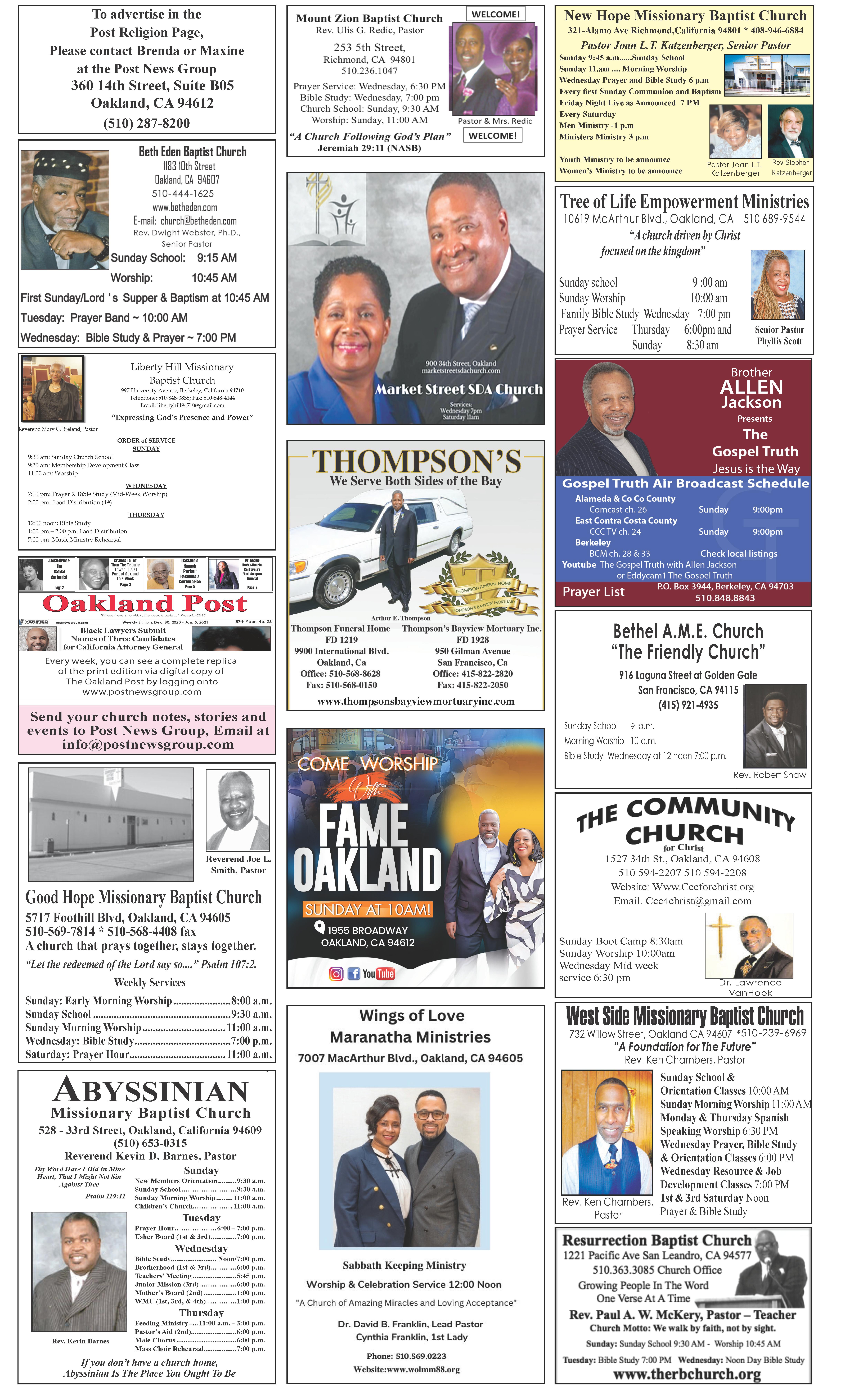

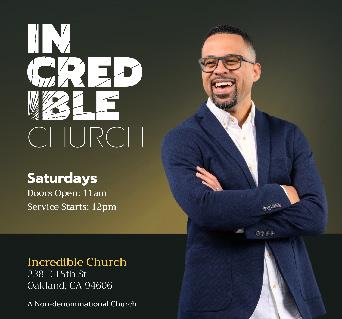
Adult Day Program
Dedicated staff needed to work with individuals with developmental disabilities in communitybased settings, or environments. Qualifications: High school or equivalent. Driver’s license. Dependable and efficient. Background check. Physical exam and TB test. Training available. Decent wages. Please call (510) 690-9570.
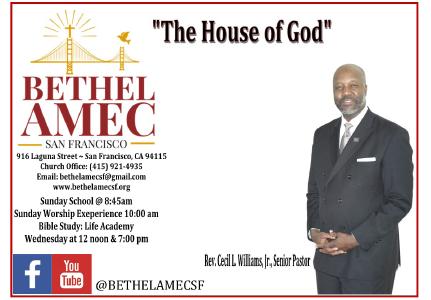
The original policy was written and amended by OPD with no input or approval from the Oakland Police Commission. The original policy was based on national best practices, written and implemented by former Police Chief Sean Whent. In 2022, after two high-speed police chases resulted in the deaths of two bystand-
Vilifying the commission is the wrong target, dishonest and reflects their real opposition to oversight and constitutional policing.
OPOA has manufactured this crisis by not following the current policy and signaling to criminals that they will not do their job. OPD does not have a “no chase” policy.
Continued on page 6

Special to The Post
By Emil Guillermo
When grants were announced
a five-year period to spend as they see fit.
land Police Officers Association (OPOA), Newsom called the Oakland Police Commission irresponsible in their duty to the safety of Oakland residents because they declined to change the pursuit policy when tasked to do so by the Oakland City Council: “In July, I wrote a letter to the Police Commission. I wrote a letter to the City Council. I wrote a let-
erts is excerpted from the MacArthur Fellows web site.
lice commission on Sept. 19, 2024, 100 residents of Oakland implored the commission to revise restrictions and restore police chase capabilities. They highlighted to the commission that “Oakland’s businesses are being targeted almost on a daily basis and we need to help our small business owners….it is a plea to help our city thrive.”
and
character, Ismay, the Titanic’s owner.
“Did I make the tragedy inevitable when I built a poorly designed ship right down to its cheap rivets?”
A graduate of Yale University with a law degree from Harvard, Dorothy Roberts is a legal scholar and public policy researcher exposing racial inequities embedded within health and social service systems.
Sine 2012, she has been a professor of Law and Sociology, and on the faculty in the department of Africana Studies at the University of Pennsylvania.
fault of DEI (Diversity, Equity, and Inclusion) programs.
Oct. 1, it was noted that eight of the 22 MacArthur fellows were African American. Among the recipients of the so-called ‘genius grants’ are scholars, visual and media artists a poet/writer, historian, and dancer/choreographer who each receive $800,000 over
If you don’t know about Shine and the “toasts,” there’s no better time to learn about it than through playwright Ishmael Reed’s “Shine Challenge 2025” this Black History Month.
Reed, who is from Oakland, brought his latest play to New York City last week. I was honored to be a part of it.
Where else do I get to be the white villain in Black theater?
That’s not typecasting, it’s Reed’s provocative sense of inclusion to cast me, a Filipino American, as J. Bruce Ismay, the English patrician whose company built the Titanic.
Shine is part of Black storytelling culture and the oral tradition of the “Shine Toasts.”
Their names are Ruha Benjamin, Jericho Brown, Tony Cokes, Jennifer L. Morgan, Ebony G. Patterson, Shamel Pitts, Jason Reynolds, and Dorothy Roberts. This is the eighth and last in the series highlighting the Black awardees. The report below on Dorothy Rob-
The toasts were short narratives people in the community told to each other about the sinking of the Titanic in 1912. The ship had been seen as a symbol of white supremacy. When it went down, people didn’t have Lester Holt on NBC to tell the story.
So, they told the story, one to another, slightly embellishing until the stories became a mix of fact and fiction.
Shine’s legacy was put on paper by writer Langston Hughes, who captured 44 lines of the toasts as he makes his way from steerage to the ship’s deck to swim to freedom.
Reed takes it from there. He gives Shine his day in court.
Reed makes the imprisoned Shine his own attorney, and he grills witnesses, including my
That’s the human part of Reed’s story. But then the play takes a surreal turn when Reed imagines Shine’s defense witnesses as the innocent animals in nature. The North Atlantic sharks and polar bears are represented when Jack the Shark and Polar Bear Sam testify on Shine’s behalf. It’s an animal rights play? In a way, sort of. But how else is a Black man to get justice in court?
Roberts’s work encompasses reproductive health, bioethics, and child welfare. She sheds light on systemic inequities, amplifies the voices of those directly affected, and boldly calls for wholesale transformation of existing systems.
In Reed’s satire, even the iceberg that the ship hit has her say. (Yes, it’s an icy woman. And she isn’t white).
Roberts’s early work focused on Black women’s reproductive rights and their fight for reproductive justice. In “Killing the Black
The “challenge” from Reed to us all is to keep the story of Shine alive. Would the next generation’s vision be from a rapper? What will inspire another teller of the Shine story, the man accused of sinking an iconic symbol of whiteness, who then swam to safety in Harlem, aided by his friend Felix, the whale.
We were on stage the same time as the mid-air collision in Washington, D.C., that killed 67 people.
The next day felon and president Donald Trump didn’t hesitate to place blame. Said 47: It was the

Body: Race, Reproduction, and the Meaning of Liberty 1997)”, she analyzes historical and contemporary policies and practices that denied agency to Black women and sought to control their childbearing—from forced procreation during slavery, to coercive sterilization and welfare reform—and advocates for an expanded understanding of reproductive freedom.
A lie, of course, but the scapegoating narrative never ends. More than metaphor, it is still a part of the American mindset worth both satirizing and condemning.
“The Shine Challenge 2025,” Theater for the New City, 155 First Ave., NY, NY,10003
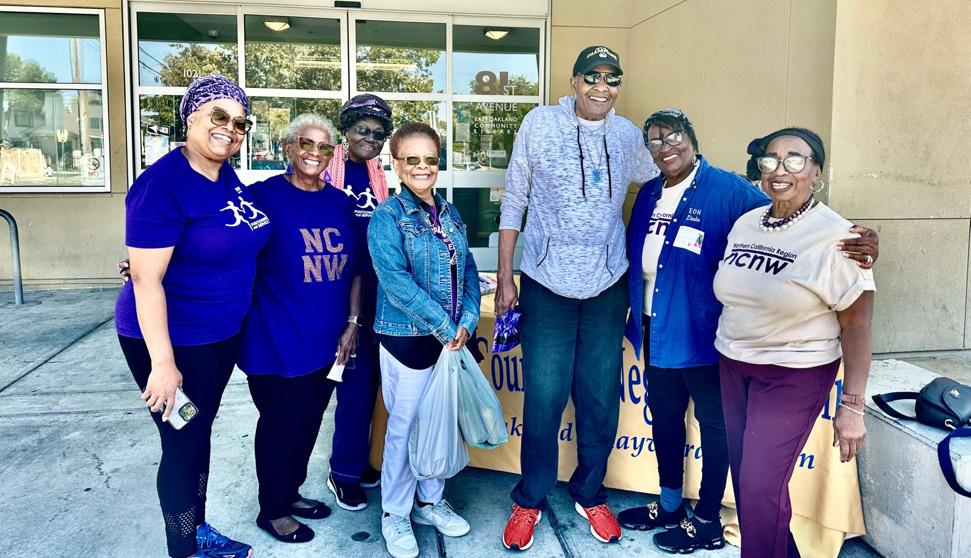
of poverty as neglect.
This work prompted Roberts to examine the treatment of children of color in the U.S. child welfare system.
Thurs - Sun; Feb. 6, 7, 8, 8p.m.; Feb. 9, 3 p.m.
CPS disproportionately investigates Black and Indigenous families, especially if they are lowincome, and children from these families are much more likely than white children to be removed from their families after CPS referral.
She also shows that blaming tural problems, while ignoring the historical roots of economic and social inequality, fails families and Roberts argues that the en grained oppressive features of the current system render it beyond repair. She calls for creating an entirely new approach focused on supporting families rather than punishing them.
Thurs – Sun; Feb. 13, 14, 15, 8 p.m.; Feb. 16, 3 p.m.
Tickets: https://ci.ovationtix. com/35441/production/1223261
About the Author
After nearly two decades of research and advocacy work alongside parents, social workers, family defense lawyers, and organizations, Roberts has concluded that the current child welfare system is in fact a system of family policing with alarmingly unequal practices and outcomes. Her 2001 book, “Shattered Bonds: The Color of Child Welfare,” details the outsized role that race and class play in determining who is subject to
In “Torn Apart: How the Child Welfare System Destroys Black Families—and How Abolition
Can Build a Safer World (2022),”
Emil Guillermo is an awardwinning journalist, commentator, humorist and stage performer. Join him on Patreon.com/emilamok, on substack, or on YouTube.com/@emilamok1
By Stacy Rogers Special
Roberts traces the historical, cultural, and political forces driving the racial and class imbalance in child welfare interventions.
to
The Post
These include stereotypes about Black parents as negligent, devaluation of Black family bonds, and stigmatization of parenting practices that fall outside a narrow set
Back in 2018, members of the East Oakland-Hayward Section of National Council of Negro Women were deeply moved after
Her support for dismantling the current system of child welfare is unsettling to some, but her provocation inspires many to think more critically about its poor track record and harmful design. By uncovering the complex forces underlying social systems and institutions, and uplifting the experiences of people caught up in them, Roberts creates opportunities to imagine and build more equitable and responsive ways to ensure child and family safety.
learning that, as part of sexual assault investigations, female victims often had their underwear retained as evidence and were sent home without their personal be-
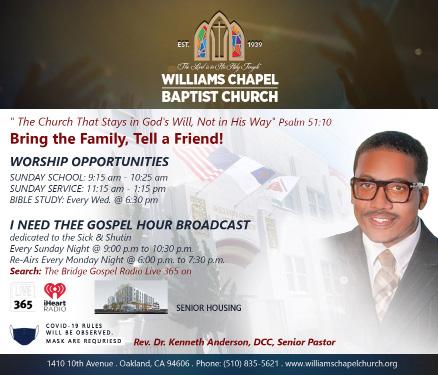


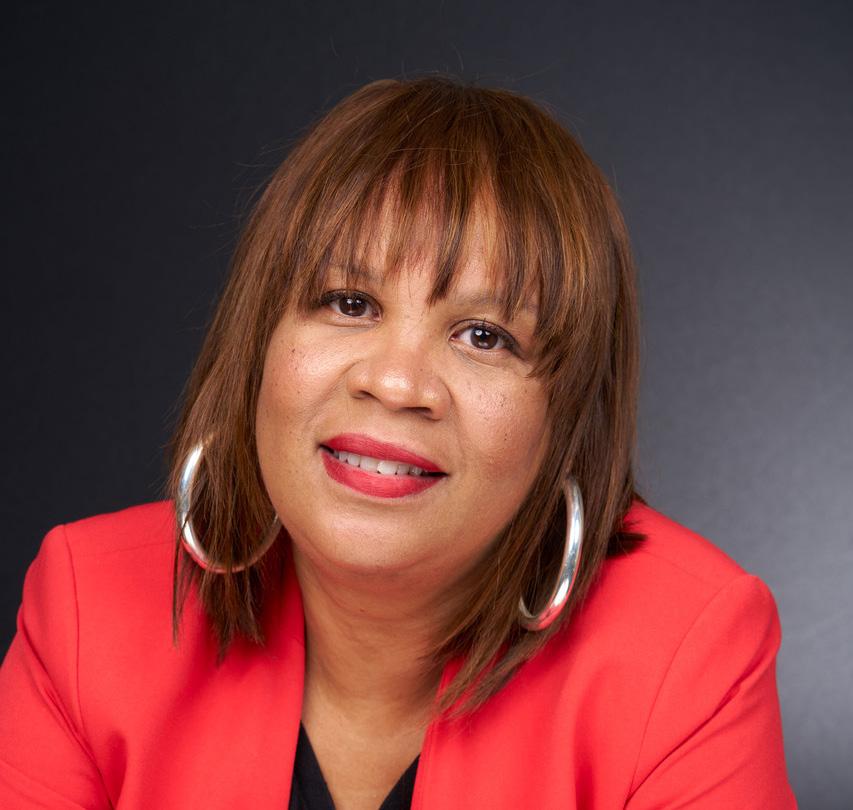
By Kellie Todd Griffin Special to California Black Media Partners
We are standing at a crossroads — where our history meets our future. In this moment, we should ask ourselves: What would our ancestors do?
Over the last six months, we’ve watched companies step away from their commitments to diversity, equity, and inclusion (DEI). And that has left many of us with a hard choice to make because letting go of our conveniences isn’t easy. But we have never been a people who choose easy over right. Our legacy is built on struggle and sacrifice, knowing that real progress doesn’t come without real work.
Almost 70 years ago, the Montgomery Bus Boycott showed us what work looks like. It wasn’t just about Rosa Parks refusing to give up her seat. It was about a community coming together, saying “enough.” For 13 months, they walked instead of riding the bus. They organized carpools. They sacrificed their safety, comfort, and livelihoods to take a stand. And
they won.
That boycott didn’t just desegregate buses. It showed the world the power of Black economic resistance. It hit the city’s transit system where it hurt, forcing real change.
In the 1990s, Jackson and Glenda Gill did it again — this time with the auto industry. They pushed Japanese car manufacturers to invest in Black suppliers, dealers, and employees, securing $7.2 billion in initiatives from Toyota alone.
These movements teach us boycotts work. Economic action drives systemic change. But let’s be clear: change requires sacrifice. Some will lose shelf space. Some may struggle. That is a real and difficult truth.
Montgomery wasn’t just about civil rights. It was an economic battle. For a brief moment, we built something incredible — a fully functioning Black-owned transit system. But when the buses were integrated, that system disappeared. That should make us think.
Black entrepreneurs today are
building businesses out of necessity. They see a need in the market, and they fill it — not just for profit, but for us.
Last fall, Walmart announced it would no longer focus on DEI, choosing instead to talk about “belonging.” And yet, just weeks later, they rolled out holiday commercials featuring Lorenz Tate, Nia Long and Busta Rhymes — images carefully designed to speak to us and to our spending power.
Our spending power is undeniable. Black consumers make up 10% of Walmart’s sales, 8.9% of Target’s. Our economic clout reached $1.6 trillion in 2020. And it’s only growing.
Our dollar matters. But this moment isn’t about money. It’s about power. It’s about whether we’re willing to step outside our comfort zones, to punch above our weight class just like our ancestors did. Because our fight has always been about tomorrow.
So, the question is: What kind of future are we willing to build? And what are we willing to sacrifice to get there?
Let’s make this happen.
About the Author Kellie Todd Griffin is the President & CEO of the California Black Women’s Collective Empowerment Institute. With a deep commitment to equity and justice, she champions initiatives that amplify the voices and influence of Black women across California. Known for her strategic insight and passion for community empowerment, Kellie is a driving force in fostering systemic change and collective progress.



By Terri Schlichenmeyer
Author: Various Authors and Illustrators, c.2024, 2025, $17.95 - $18.99
Your mother tells you stories. She talks about things that happened before you were born; Grandpa does it, too, and you like to hear every tale. So, why not have these stories about Black History on your shelves?
For the boy who loves looking good, “Saturday Morning at the ‘Shop” by Keenan Jones, illustrated by Ken Daley (Beach Lane Books, $18.99) is a great book to have around. One day each week, everything happens at the barber shop, and not just haircuts! This is a fun read and a cultural touchstone for boys ages 4 to 8.
Young cooks will love “Jollof Day” by Bernard Mensah, illustrated by Annalise Barber-Opp (Dial, $19.99), the story of father


and son in the kitchen for a special event that starts early and ends in mouthwatering goodness. Kids will love the story, parents will love the recipe at book’s end.
The child who has activism in their soul will want “We Miss You, George Floyd” by Shannon Gibney, illustrated by Leeya Rose Jackson (University of Minnesota Press, $17.95). It’s a brief but well-done look at the life and murder of Floyd and why it’s important. Younger kids will like the pictures, but older children will understand the story best.
It’s also important for kids to know about their heroes, and “Sharing the Dream” by Shelia P. Moses, illustrated by Keith Mallett (Nancy Paulsen Books, $18.99) begins with an exciting trip: the whole family’s going to the March on Washington and young Agnes knows why it’s
cratic delegation at the Democratic National Convention. In a televised testimony, she detailed the horrors of racism and voter suppression, her voice trembling with real anger:
“All of this is on account of we want to register, to become firstclass citizens...”
Her words frightened the political establishment. President Lyndon B. Johnson, fearing the impact of her testimony, called an impromptu press conference to distract the media. But the nation had already heard her.
She continued to fight for eco-
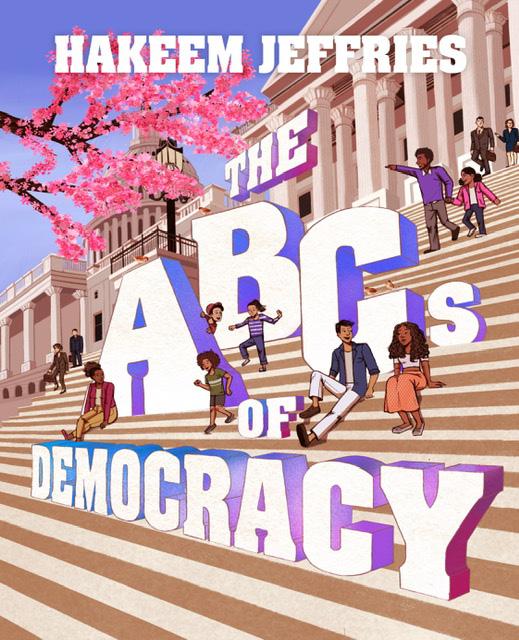
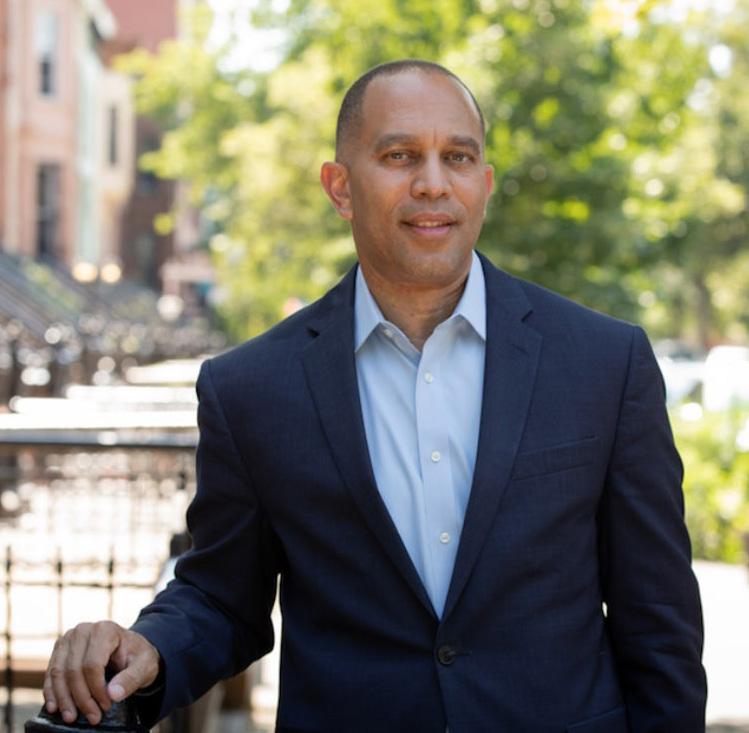
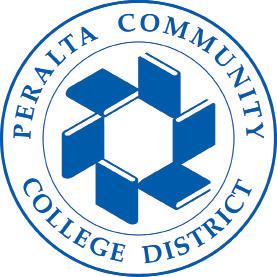
important. Read this story to children ages 3-to-8 and be sure your older ones know about the biographies at books’ end.
Speaking of heroes, “Unstoppable John” by Pat Zietlow Miller, illustrated by Jerry Jordan (Viking, $18.99) is a slice-of-life story that’s perfect for kids who crave books. It’s the tale of young John Lewis, who loved to read almost anything he could get his hands on – but he couldn’t get a library card. Back then, libraries were only for White folks but John knew that if he was persistent and kept working on it, soon libraries and other places would open up to people who looked like him. This is a heroic book for 5-to-9-yearolds and a nice launching point for other, similar biographies.
And finally, for the child who loves world history, “Through Sand and Salt” by Elizabeth Zunon (Bloomsbury, $18.99) is a book you’ll want. It’s the tale of a young Malik who travels with his father’s caravan across the Sahara Desert to take salt to Timbuktu. It’s a long journey filled with danger and excitement, new friends and old lessons. Just beware, there’s a lot to this book, in a longer story that’s perhaps, too much for a small child in one sitting. Break it up into two read-alouds, or give it to older kids, ages 9 to 12. They’ll enjoy it much more.
And if these Black History Month books aren’t enough, be sure to ask your favorite bookseller or librarian for more. For kids of all ages, they’ve got stories.
nomic justice, running for Congress, organizing voter drives, and advocating for Black self-sufficiency. She founded the Freedom Farm Cooperative, an organization committed to ensuring that Black families had better food security and access to land.
Hamer died in 1977. She proved that power did not belong solely to the privileged or the educated. It could also rise from the cotton fields, from the hands of those who had been beaten down yet refused to stay down. Her voice, filled with pain and hope, still echoes today: “I’m sick and tired of being sick and tired.”
linary artist George Dunlap opened a string of restaurants in the area, including Dunlap’s Dining Room, known for its Southern cooking.
4. West Oakland (Alameda County) – A major center for Black migration during WWII, known for its jazz scene and civil rights activism. The neighborhood was home to the Black Panther Party headquarters and a center of Black commerce and entertainment in the 1940s and 1950s. Seventh Street served as the cultural hub of the area and was lined with Black-owned businesses, including Slim Jenkin’s Place, one of the most popular jazz clubs in the area attracting big names like B.B King, Miles Davis, and Duke Ellington.
6. Bayview-Hunters Point (San Francisco County) - During WWII, the establishment of Hunters Point Naval Shipyard attracted an influx of African American workers. Around that time, 59% of the neighborhood’s population was Black. The area, which has a rich history of activism, remains the neighborhood with the highest concentration of Black San Franciscans.
7. The Fillmore District (San Francisco County) – Known as the “Harlem of the West,”
5. South Berkeley (Alameda County) –Black families moved to South Berkeley during the Great Migration for jobs at shipyards and railroad companies. In 1948, William Byron Rumford Sr. became the first African American elected to a state public office when he won an Assembly seat. Rumford owned a pharmacy on Sacramento Street, which was a hub for the Black community.
... Continued from page 4
The realization that these survivors had not only endured the trauma of assault but were also left without essential undergarments prompted the Section, consisting of more than 60 members, to take action.
In response, the “Panty Pantry” initiative was established to provide new underwear to women and girls who are survivors of sex-
ual assault, human trafficking, domestic abuse, and homelessness.
For more than six years, the East Oakland-Hayward Section of NCNW has collected and donated thousands of pairs of underwear to organizations offering direct services to these vulnerable populations. Most recently, the Section is arranging panty donations to victims of the devastating Southern California firestorms.
The Panty Pantry is one of the major initiatives hosted by the East Oakland-Hayward Section.
Founded by Mary McLeod Bethune 90 years ago, NCNW, is one of the nation’s oldest and most es-
teemed African American women’s organizations. The East Oakland-Hayward is one of more than 300 community- based sections throughout the United States. There are ten Sections of NCNW here in Northern California.
Publication Dates: February 7, 2025 and February 14, 2025 longings.
The Section welcomes donations to the Panty Pantry, and collections occur year- round, with ongoing efforts to ensure that those in need receive the support they deserve. To learn more about the Panty Pantry, or to contribute or make donations, please contact the East Oakland-Hayward Section of NCNW at eohncnw.org or call them at 510-253-2033.
The Peralta Community College District (PCCD) is seeking proposals from qualified firms to provide Laney College Food and Supplies Services (RFP No. 24-25/11). Proposals are to be submitted electronically (via Planet Bid), until 2:00 PM on March 10, 2025.
Scope of work
PCCD is seeking a vendor who can:
• Supply both food and other supplies necessary for the operation of its Cafeteria and Bistro
• Deliver supplies within 24 hours of order
• Provide monthly reports of spending on food and supplies
A Mandatory Pre-proposal zoom meeting will be held on February 19, 2025 at 2:00 PM. via Zoom: Conference Meeting ID 812 8895 2202. Register in advance for this meeting: https://peralta-edu.zoom.us/meeting/register/dhaOLARyRzGKxH_fRMqBSg
After registering, you will receive a confirmation email containing information about joining the meeting.
Copies of the proposal documents may be obtained by clicking on the following link: https://vendors.planetbids.com/portal/71895/bo/bo-search
Governing Codes:
GC 53068
EC 81641


Refusing to Cooperate with Trump’s Call ...
Continued from page 1
munities are safe.”
Tom Holman, Trump’s handpicked border czar, replied with threats. “If your Chicago mayor doesn’t want to help, he can step aside. But if he impedes us — if he knowingly harbors or conceals an illegal alien — I will prosecute him.”
“Chicago is in trouble because your mayor sucks and your governor sucks,” Holman said.
In Newark, Mayor Baraka released a strong written statement following a n immigration raid in his city.
“(On Jan. 23), U.S. Immigration and Customs Enforcement agents raided a local establishment in the City of Newark, detaining undocumented residents as well as citizens without producing a warrant. One of the detainees is a U.S. military veteran who suffered the indignity of having the legitimacy of his military documentation questioned,” said Baraka.
“This egregious act is in plain violation of the Fourth Amendment of the U.S. Constitution, which guarantees the right of the people to be secure in their persons, houses, papers, and effects against unreasonable searches and seizures. Newark will not stand by idly while people... are being unlawfully terrorized. I will be holding a press conference in alliance with partners ready and willing to defend and protect civil and human rights.”
In California, Attorney General Rob Bonta has issued guidelines to law enforcement agencies in the state describing their obligations under SB 54.
“While (President Trump) spouts xenophobic rhetoric and makes plans to implement his inhumane mass deportation agenda, California is focused on protecting our communities,” said Bonta.
“No matter who is in the White House, California will continue to lead with California values – and we will not divert vital public safety resources for federal immigration enforcement,” he said.
Under existing state law, SB 54, California law enforcement agencies:
• Are prohibited from investigating, interrogating, detaining, or arresting persons for immigration enforcement purposes;
• Are not allowed to honor transfer and notification requests or provide information regarding
Continued from page 1
manager Mellynda Hartel said. “His impact is still felt in the KTVU newsroom today.”
Former Congresswoman and current Oakland mayoral candidate Barbara Lee said that Richmond’s loss “is felt by all of us.
“I join so many in Oakland in mourning the passing of Dennis Richmond — a legend, trailblazer and dear friend,” Lee wrote on social media. “For decades, he was the voice who shined a light on our city, breaking barriers in broadcast news.”
When heiress Patty Hearst was kidnapped by the Symbionese Liberation Army in 1974, and put on trial two years later, Richmond handled the celebrity crime story with a seeming ease. In 1978, he similarly handled the assassinations of San Francisco Supervisor Harvey Milk and Mayor George Moscone for an audience that was in shock.
And 11 years later, his most important audience was survivors of the Loma Prieta earthquake who, listening on batteryoperated radios, trusted Richmond
a person’s release date except in certain circumstances;
• Cannot allow officers to be supervised by federal agencies or deputized for immigration enforcement purposes.
• May not enter into new contracts with the federal government to house or detain noncitizens in a locked detention facility for purposes of immigration custody.
• Are prohibited from participating in joint law enforcement task forces where the primary purpose of the task force is immigration enforcement.
Locally, a statement issued by the office of U.S. Rep. Lateefah Simon said that Simon stands “firmly in solidarity with our immigrant families whose contributions through their skills, dreams, and resilience are woven in the fabric of America’s story.”
In a presentation to the Oakland Police Commission in January, OPD Lt. Gordon Dorham said, “The City of Oakland has a tradition of embracing diversity and respecting civil and human rights, regardless of immigration status.
Oakland has been on record as a city of refuge since 1986 and reaffirmed its status as a sanctuary city in 2016.
Continuing, Lt. Dorham said the city’s cooperation agreement with the U.S. Immigration and Customs Enforcement (ICE) was terminated in 2017.
Under the Oakland Sanctuary City Ordinance. “OPD employees shall not provide law enforcement assistance, including traffic support to ICE, including any subdivision of ICE in any capacity except to respond to a public safety emergency related to an ICE action or where assistance is required by federal, state, statute, regulation, or court decision,” he said.
“In the event OPD assists in ICE investigation, detention, arrest, or any other operation, OPD shall explain the facts given rise to its action in a written report to the Public Safety Committee,” Lt. Dorham said.
“OPD shall not provide federal immigration agencies access to individuals solely for the purpose of immigration enforcement. Officers shall not inquire or request proof of.”
to provide information and instructions on what to do.
Over the years he became known as a ‘dean’ of television news, mentoring many who came behind him. Among them was Darren Zulberti, a KTVU assistant news director.
"He always reminded me and those around him to treat the viewer with respect, reporting oftentimes difficult news in uncertain times with clarity, context and straightforward delivery," Zulberti said in a KTVU news story.
When he retired in 2006 on his 65th birthday, Richmond’s audience surpassed Oprah Winfrey’s with 400,000 viewers. The winner of several awards, among them the Humanitarian Award, Oakland’s highest honor, Richmond appeared in four movies where he played a news anchor.
According to the Mercury News, Richmond gave no credit to himself. “What makes me proud is that if the rest of the people hadn’t pulled together, I’d have fallen flat on my face.”
Richmond grew up on Rossford, Ohio, served in the Army with the 82nd Airborne
Continued from page 1
accessibility. Their mission is to bridge gaps in food distribution, address the social issues contributing to hunger, and promote sustainable food systems.
ICAC, representing a coalition of 500 congregations and individuals, actively tackles social issues in the region. Local leaders and community members are invited to attend their upcoming monthly meeting, where discussions will focus on food access, crime and safety prevention, job training, and the development of a Transitional Housing Trailer Village at the West Side Missionary Baptist Church/ICAC Hub.
The hybrid meeting is scheduled for February 13, 2025, from 1:00 PM to 2:30 PM at William Chapel Baptist Church, located at 1410 10th Ave, Oakland, CA 94606. Organizers say the gathering will foster dialogue and collaboration among residents, nonprofits, government agencies, and law enforcement.
“Crime and safety in District 2, as well as homelessness and affordable housing, remain critical concerns,” says Dr. Kenneth Anderson, pastor of William Chapel Baptist Church. “We are working to develop 65 units of senior housing and expand job training
...
Continued from page 1 sanctuary state?
Romani: [California] has passed its sanctuary law, which vastly prohibits law enforcement from lending resources immigration enforcement and along with that comes a lot of prohibitions. For example, local law enforcement is prohibited from asking people about their immigration status or they are prohibited from entering into 287(g) agreements, which would deputize local officers to function as immigration officers. And we don’t have that in California. What can undocumented immigrants do in order to protect themselves?
Romani: We encourage people to know their rights and what they should and shouldn’t do in encounters with immigration or federal agents. Second, they can control how they prepare for what could be a very scary situation where they are detained by immigration authorities. People can prepare their families and themselves for when that moment comes by [memorizing] the phone number of an immigration attorney or trusted loved one; having a plan in place for children, if a parent is detained; and [gather important documents a trusted person might need to give an immigration attorney if detained].
Communities across the state are reporting that ICE agents are in their city, how can people stay aware of future incidents and potential threats?
Romani: There are rapid response people on the ground at the local level now and a lot of those folks are trained [to know what
Division and graduated from Columbia University’s Graduate School of Journalism in 1969 while he was already employed at KTVU.
During his years on television, Richmond lived in San Ramon, but moved to Grass Valley after he retired. He passed away there on Feb. 5 surrounded by his family. He is survived by his wife, Deborah, a daughter, and a stepson.
The Mercury News, USA Todday, KTVU Fox News 2, NationalWorld, and Wikipedia are the sources for this report.
initiatives through ICAC and the Port of Oakland to create career employment opportunities.”
Dr. Brittany Chambers-Butcher, Pastor of Christian Fellowship, is leading the Bedrock Initiative, which emerged from West Side Missionary Baptist Church. This initiative aims to construct 42 units of affordable housing, further strengthening the community’s support network.
One of the key agenda items will be the Transitional Housing Trailer Village, which seeks to provide safe, temporary housing for individuals and families experiencing homelessness. Community leaders will outline how this initiative, along with food programs and job training, will create a comprehensive approach to addressing poverty and economic instability.
This meeting is part of an ongoing effort to strengthen community collaboration and empower residents to take an active role in improving their neighborhoods.
“Working together works!” says Ken Chambers. “Change starts with you — your congregation, your faith, your nonprofits, and businesses. Please attend our meeting, join our organization, and make a donation.”
For more information or to RSVP, please visit www.interfaithac.org. Join us as we strive to make a difference in our community!
ICE looks like]. They’re trying to educate the public by distributing pictures of what immigration vehicles. Unfortunately, I also think that sometimes officers [detain people] in plain clothing and it’s really hard to know what emblems to recognize, and I think that’s why there’s so much fear that gets spread quickly because folks didn’t know what they’re looking out for. What we’re trying to do on the ground is we’re trying to work closely with folks that are in the community and can try to verify quickly. Whether that’s folks taking pictures of immigration authorities outside of supermarkets or schools, people can take pictures and share that with rapid response people that are trained or that are connected with lawyers that are trained to help verify whether or not those are immigration officers.
If you have more questions or need further assistance, it’s always best to consult with a legal expert familiar with immigration law.
U.S. Health Institutions Must ‘First, Do No Harm’ ...
Continued from page 1
concerned by the nominations announced by President Trump to critical healthcare related positions. Many of their previous statements and positions are rooted in misinformation.
Coupled with their lack of government and healthcarerelated experience, we are concerned these nominees will significantly undermine public health, increase the number of uninsured people, worsen health outcomes, and exacerbate health disparities. Physicians observe Hippocrates’ maxim to “First Do No Harm,” and we urge Trump administration officials to do the same.
It is critical that the leadership of HHS and its agencies make decisions based on facts, evidence, and science. Misinformation and disinformation must not guide policymaking decisions and undermine evidence-based public health strategies. Spreading these falsehoods also erodes trust in our public institutions.
Vaccines, in particular, have been a target of disinformation by some HHS nominees. In fact, research continues to confirm that vaccines are safe and effective.
Vaccines go through multiple rounds of clinical trials prior to being approved by the Food and Drug Administration (FDA) for administration to the public.
Vaccines protect against life-threatening diseases such as measles, polio, tetanus, and meningococcal disease and, when used effectively, have been shown to eliminate or substantially reduce disease prevalence and/or severity.
Because of vaccine mis- and disinformation, there has been a resurgence in vaccine-preventable diseases such as measles and whooping cough, endangering those who are too young or unable to be vaccinated.
Several nominees have spread disinformation alleging that fluoride in public drinking water is harmful. In fact, fluoride in drinking water at the recommended level of 0.7 parts per million, like we have in our EBMUD water, is safe and keeps teeth strong. Because of public health interventions dating back
to the 1960s that have resulted in 72.3% of the U.S. population now having access to fluoridated water, there has been a reduction in cavities by about 25% in both children and adults.
We also encourage the next administration to invest in our public health infrastructure. The COVID-19 pandemic highlighted the critical role of public health agencies in preventing and responding to health crises in our communities.
Health departments at the state and local levels rely on federal funding support and technical assistance to develop public health response plans, implement public health strategies, and work with on the ground organizations to serve hard to reach communities. Public health agencies are critical for protecting everyone in our communities, regardless of income-level, insurance status, or housing status.
Health officials should also work to protect the significant improvements in insurance coverage that have occurred since the passage of the ACA in 2010. According to HHS, the number of uninsured Americans fell from 48 million in 2010 to 25.6 million in 2023.
California has led the way by investing in Medi-Cal and expanding eligibility for enrollment. In fact, it reached its lowest uninsured rate ever in 2022 at 6.2%. Voters affirmed this commitment to expanding and protecting access to care in November by passing Proposition 35, which significantly expanded funding for California’s MediCal program. The administration should advance policies that strengthen the ACA, Medicaid, and Medicare and improve access to affordable health care.
Regardless of the president in power, physicians will always put the best interests of our patients and communities at the forefront. We will continue to be a resource to our patients, providing evidencebased and scientifically proven information and striving to better their lives and our community's health. We urge the new Trump administration to do the same.
Albert L. Brooks MD is the immediate past president of the Alameda-Contra Costa Medical Association, which represents 6,000 East Bay physicians.
